The year is 2023. A good website is even more important than a good business card. If at least eight of your fingers aren’t touching a keyboard six or more hours a day like ours, you might not know exactly what it is that makes a website great. Sure, you could pick a good one out of a lineup, but you might have trouble explaining why it’s the one you chose. Content is king, but it can only take you so far if its presentation is a jumbled, unorganized mess. Great web design will certainly turn some heads on first glance, but if it’s just a coat of paint without the primer, the first impression will wash away pretty quickly. So, with the goal of making you, dear reader, just a little bit more web savvy, let’s discuss just a few of the necessary components that make a great website great.
Clear Navigation & Information Hierarchy
A great website should have a clear and intuitive navigation system that makes it easy for users to find the information they need without any friction. With few exceptions, navigation should remain consistent across all pages of the site with one to two word labels that make it easy to understand where any given link will go. This consistency will allow users to feel confident and comfortable as they navigate through the site.
Responsive Web Design
With more people accessing the internet on their mobile devices than dedicated computers these days, it’s essential to have a website that is optimized for mobile viewing. Back in the good old days, this meant designing two or more entirely different versions of the site that load depending on the device being used. Now, responsive websites allow the design and layout of the page to adjust naturally to the screen size of the viewing device. This ensures that a site looks great across all devices, big or small.
Site Speed
Remember that one site you visited recently that took so long to load that you just gave up, hit the back button, and went to the next search result? Nobody likes waiting for a slow website to load. A great website should be optimized not only for various screen sizes, but also for the fastest possible load times. This often involves minimizing the size of images on the site (either via compression, or by actually resizing the image itself), minimizing the stylesheets and JavaScript, hosting videos offsite on a streaming platform (such as YouTube or Vimeo), and potentially using a content delivery network (CDN) to optimize load times by hosting site files on various servers around the country or globe.
High-Quality Content
You’ve heard us go on and on about quality content; and for good reason. Not only does high quality content set you apart from your competitors, but it also helps your site climb the ranks of search engines like Google. It’s important to make content easy to parse by utilizing visual hierarchy such as heading tags and horizontal rules (or similarly functioning dividing elements) so that your readers and search engine crawlers have the easiest time possible making sense of your content.
Calls to Action
A call to action (CTA) is a statement that makes it crystal clear to a user what action they should take next. This can be a “Call Us Now,” a “Schedule a Free Consultation Today,” a “Sign Up For Our Newsletter” or even just a simple “Contact Us.” CTAs are important not just for your users but also for generating leads. Great CTAs are easy to find, easy to understand, and most important of all, compelling. If you can get a user to convert off of a CTA, half the battle is already won.
Security
This one is important (they all are, but you get what I mean). With more and more of our personal information being stored online and the increasing number of cyber threats, it’s critical that your website is secure.
At the most basic level, an SSL certificate should be installed on your site (indicated by the padlock in the address bar, and the https:// instead of just http:// at the start of your url). This encrypts data being sent across the network making it much more difficult for interceptors to do anything nefarious. It’s a good common practice these days, but it is doubly important if you are running an ecommerce website and sending/collecting sensitive payment information.
Another great step one you can take to protect your site is installing a firewall. Much like the one that likely bothers you weekly about database updates in your toolbar, it can prevent bad actors from injecting malware or making unauthorized changes to site code.
Last but not least, keeping site software such as your CMS and any plugins up to date is critical to minimizing threats, as security updates are frequently released as engineers patch holes that would make it easy for hackers to take advantage of.
In 2023, just having a website is no longer enough to keep you on pace with your competition. To stand out among the crowd, you need to have a great website, and everything we just covered is only the beginning. If half of what I just discussed seemed like gobbledygook, or you just don’t have the time in your busy schedule to handle all of that yourself, you’re in luck. Web design is just one of the many services we pride ourselves on here at On Target.

